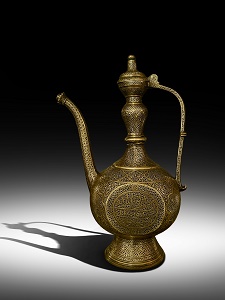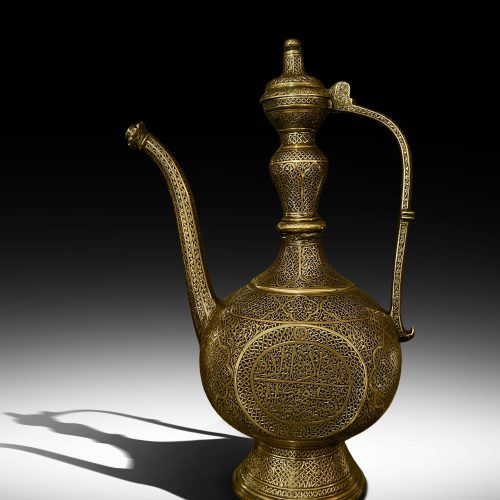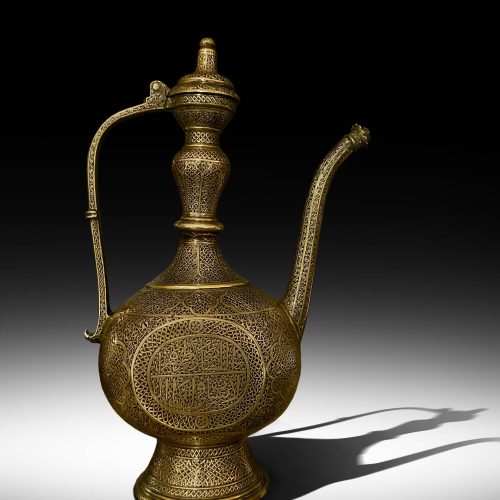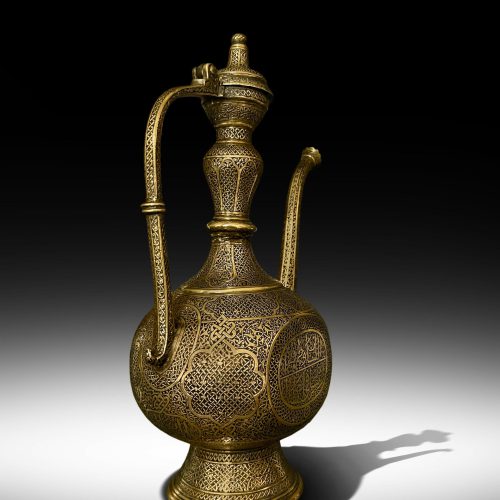DESCRIPTION: | This magnificent and highly engraved with decorative “Mamluck brass motifs, it is an intertwined arabesque and geometric pattern is of impressive size and refined proportions. It is in exceptional condition for its age, has a warm, golden patina. It stands on a flared, oval foot which rises to a tear-shaped body with rounded contours and softly tapering sides.
The neck flares slightly to the tear-shaped opening with a serrated-edged rim.
A domed round flower lid sits on the spout.
The lid, itself with a fine patina, is a later but early replacement. (More often than not usually ewers from this period are missing their lids altogether or halted.
The handle is of ‘S’ shaped form. The top of the handle has engraved on both sides with a stylised mamluk face, thereby suggesting a dragon or shape form for the handle.
The handle is engraved with bands inline with zig-zag motifs.The spout of tapering pentagonal form also has a gentle ‘S’ shape which leads to an exquisite flared flower spout head, It too is decorated with engraved zig-zag bands.
The body is engraved on all sides with cartouches and borders of stylised motifs and borders of carnations or pinks identifiable by their serrated petals.
The engraving on the body is bordered at the top by a series of Arbic calligraphy stylised cloud cusps,More floral borders are engraved above these. The stylisation evident in the motifs and carnation motifs follows the motifs used in Seljuks tiles and other works of metalworks.
The engraving is highlighted with dark lac.
The base of hammered brass sheet is original and is folded and hammered over the foot to keep it secure.
Typical Islamic ewers comprised a central chamber to which a spout, foot, handle and neck were attached. They permitted water to flow – Qoranic injunctions deemed flowing water to be ‘clean’. Ewers was introduced to India by Muslim invaders during the late thirteenth and early fourteenth centuries. Thereafter their designs were delicated – the ewers became more curvaceous and were decorated with lush plant and floral motifs. |
|---|








